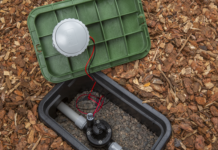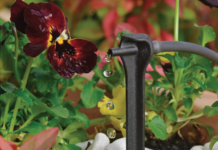Turfgrass research and management comprises a specialized discipline that has evolved to a state of elegance. It takes significant training and mentorship to hone the craft. The practice is becoming highly competitive and data oriented. Leading local practitioners find themselves stretched thin during the busy season. So, it is no surprise that superintendents, product managers, landscapers, and environmental scientists are turning to Artificial Intelligence (AI) to fine tune insights, spend less time walking the grounds, and multiply their expertise.
AI And Turfgrass: Perfect Together
A modern cousin of statistics, AI is incredibly powerful in its ability to furnish useable knowledge. When done well, AI translates a stream of complex data into actionable information. Whether it’s lawns, easements, sod farms, parks, golf courses, highway margins, or natural areas, the needs of turfgrass vary as much as the abundance of species, ecotypes, and varieties of environments that host them. This richness and diversity of data presents an opportunity to apply AI. Whether for an intensely managed putting green, erosion control, or a place to play, where there is data, AI can enhance turf quality and simplify management.
Following are 10 ways that AI enhances turfgrass management. While, this list isn’t exhaustive, it represents the breadth of uses and ideas from golf course superintendents, product managers, landscapers, and environmental scientists. And in truth, none of these applications of AI can ever substitute for experienced turf managers. But it helps do the work faster, using fewer resources, and leads to more predictable outcomes.

1) Rating greenness, vigor and coverage. Though there will always be a need for a ‘trained eye’ to ground-truth, turf researchers are increasingly turning to automated greenness, vigor and coverage ratings.
While many adopt drone and AI-based rating systems for the labor savings, it also provides a better 1:1 comparison of distant sites than the uncalibrated eyeball assessment.
And an AI-based image rating system provides greater precision and better discernment of subtle quality differences. The reason is a statistical one: images provide continuous measurements which pack in much more information than ordinal data (say, the 1-9 scale) achieved through visual assessments.
2) Optimizing management. Whether seasonal activities like seeding and winterizing, or daily activities like irrigation or mowing, optimization is the difference between turf management that’s adequate or outstanding.
AI accounts for a variety of variables (weather, timing, grass type, etc.) and forecasts precisely what will happen when an intervention is adopted.
Advanced turf management companies are implementing AI to optimize irrigation timing and variable rate fertility recommendations. The benefit is that AI provides a level of precision and predictability that could not be done manually.
3) Getting ahead of leaching and runoff. As municipalities, water management districts and the EPA zoom in on point sources of pollution, runoff and leaching (especially nitrate leaching) are becoming top of mind.
Environmental managers are now installing soil moisture and runoff monitoring sensors. By combining this sensor data with rainfall data, AI is forecasting the frequency and severity of runoff events.
By knowing ahead of time which areas will realize the most serious nutrient loss (which may exceed regulatory thresholds), site managers can prioritize areas for soil amendments or reseeding.
4) Forecasting growth. Mowing is a significant expense for turf operations. As such, groundskeepers have sought to cut down on mowing frequency, but shy from waiting too long, fearing the potential impact on quality.
Mowing frequency is a function of last mowing height, temperature, irrigation adequacy, maintenance, and fertility. Factoring these inputs into a predictive model, exact heights can be forecast to the day, providing a more efficient mowing calendar than manual timing.
A newer twist is that turf managers can now combine the forecasted turf height to predict weed dynamics, including how changes in mowing height and frequency will affect low-to-the-ground weeds versus more blade-susceptible ones.
5) Selecting varieties. No single factor dictates long-term turf success more than initial variety selection. In turn, variety success relates to site characterization and intended turf use.
The most innovative golf course architects use AI to fully characterize new sites. This combines soil information (such as is free and easily accessible via USDA data), weather data, and shading metrics quantified by applying computer vision to satellite images. Computer vision is a field of artificial intelligence that trains computers to interpret and understand the visual world.
Then, AI predicts a variety’s performance at the new site using environmental and variety trial data.
6) Demonstrating product performance. Whereas classical statistics is the ideal choice for analyzing designated turf research areas, ‘real world’ trials benefit much more from AI. The reason is that unstructured data problem solving lends itself to uncovering novel, unanticipated insights.
When we test new inputs (fertilizers, herbicides, grub control formulations, etc.), ideally we could test every variable alone and also see dramatic differences between treatments. In reality, it’s never possible to test everything we’d like, and the straight green line between two treatments usually eludes.
AI is especially powerful at isolating product effects when treatments are side-by-side (not randomized) and the difference is a matter of mere degrees. AI can subtract background variation including soil type, altitude, historical infestation, etc. from each area. This provides a much more accurate estimate of product benefit than crude observations.
7) Identifying problem areas. Whether it’s a fallen tree, a saturated spot, or Dollar Spot foci, turf managers can fly drones to survey problem locations. But rather than perform an eye-numbing daily scroll through the images, computer vision can identify these problem areas instantaneously.
The turf manager is provided a list of images with potential anomalies and can tag each problem area type and rate their importance. By integrating those decisions into the ‘machine learning’ program, the program ‘learns’ what flooded areas, and downed trees look like, and automatically applies those rankings to future images.
8) Allocating workforce. AI can help managers prioritize issues and deploy crews with maximum efficiency. The way it works is the manager assigns an importance level to each issue. When the AI system identifies the issue, it assigns a severity score, and factors the severity and importance in a ranking system with other issues.
More sophisticated systems can rank task priorities across different sites or geographies and match it to crew availability. This helps managers assign crews to the most pressing areas, while accounting for feasibility and logistics.
9) Diagnosing fertility. Drone images aided by computer vision can identify chlorotic patches. Based on soil information (ideally including fine-resolution grid sampling), most micronutrient and macronutrient deficiencies can be identified even sooner with AI than with the naked eye. Advanced AI models can tease apart compound deficiencies including pH related issues.
When nutrient rate responsiveness data is integrated with deficiency estimates, the system can prescribe rate recommendations. Rate prescriptions are then integrated with application equipment GPS systems to provide the right amount of nutrition in each spot. AI offers an imagery to application pipeline.
When using proven formulations of known nutrient performance parameters, it’s possible to anticipate the length of time the feeding will persist. This increases the accuracy of fertilizer expense projections and helps estimate return on investment for compounds like nitrogen stabilizers.
10) Improving water management. The ability to fine tune irrigation management has never been greater. Not only can AI predict where water will be needed, it can automate watering of turfgrass.
The growing use of soil adjuvants such as UpTake™ and HydroMAX™ to improve soil infiltration introduces an additional layer of complexity to optimize water use. Once again, AI models can review drone imagery and refine recommendations to quantify the effects of water volume and adjuvant concentrations.
By integrating irrigation data into the vast array of images and other sensor information, AI can calibrate sprinklers and drip lines to supply water in the volume and at the cadence that provides the greatest impact.
How To Plug Into AI For Turfgrass Management
If you are considering whether AI can help you manage your turfgrass, do these three things:
- First, make sure you have access to data. Whether irrigation systems, drones, or from spray rigs. Data fuels the AI.
- Second, read more about AI, computer vision and event stream processing, to understand how these pieces could fit with your operation.
- And finally, talk with an AI expert to see how the state of the art can match your need.
AI has reached extraordinary heights in telecommunications, banking and consumer goods and services. The future is here, and AI has made an appearance on our turf.
Hailing from a seven generation Nebraska farm, Dr. Gottula is an AgTech expert at analytics and AI company, SAS. He applies his knowledge of statistics and analytics to data across the AgTech lifecycle to help customers transform agriculture operations. Dr. Gottula’s experience and research spans many areas of agriculture including seed, turf, genetics, fertilizers, pesticides, biologicals, virology and animal nutrition. Holding a doctorate from Cornell, he formerly directed crop biotechnology studies for Bayer Crop Science.
Want to talk with fellow lawn care and landscape professionals about Turfgrass Management issues? Join the discussion in the Lawn Care forum at www.expired-link.com.











![[VIDEO] Dickies®: Discover Workwear That’s Anything But Uniform](https://turfmagazine.com/wp-content/uploads/2023/06/1647663814-4b1a2a7742790a9b1e97a3b963477850192e1d6a9dfba9b07214a77bae25d6e3-d-218x150.jpg)






























![[VIDEO] Dickies®: Discover Workwear That’s Anything But Uniform](https://turfmagazine.com/wp-content/uploads/2023/06/1647663814-4b1a2a7742790a9b1e97a3b963477850192e1d6a9dfba9b07214a77bae25d6e3-d-324x160.jpg)